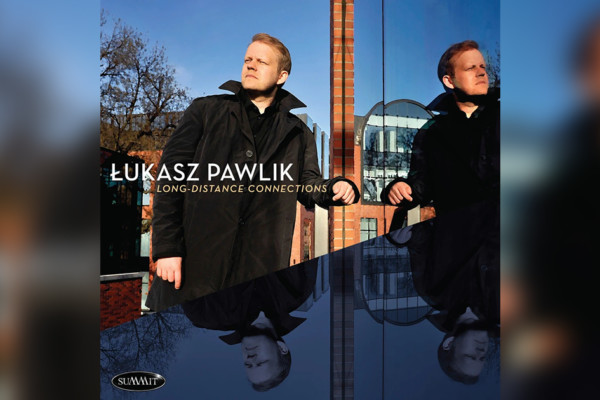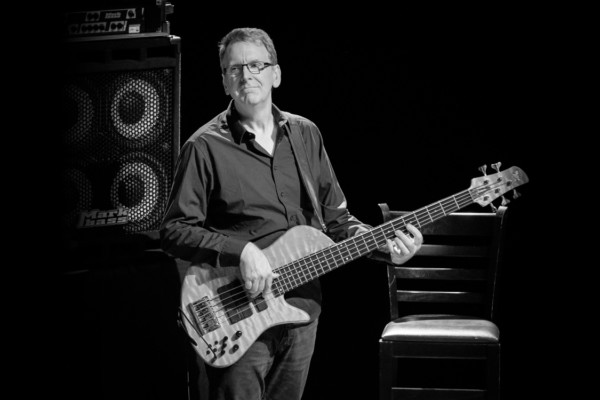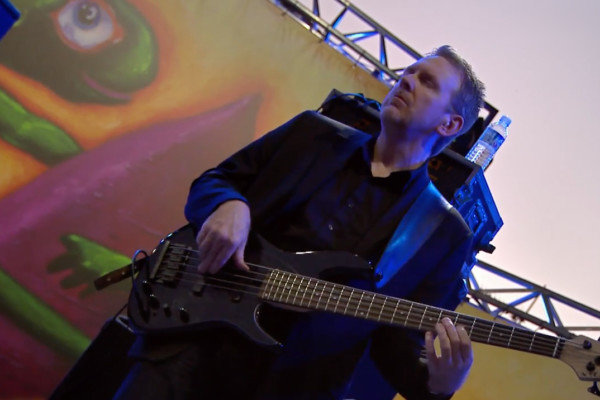Points of View: An Interview With Tom Kennedy
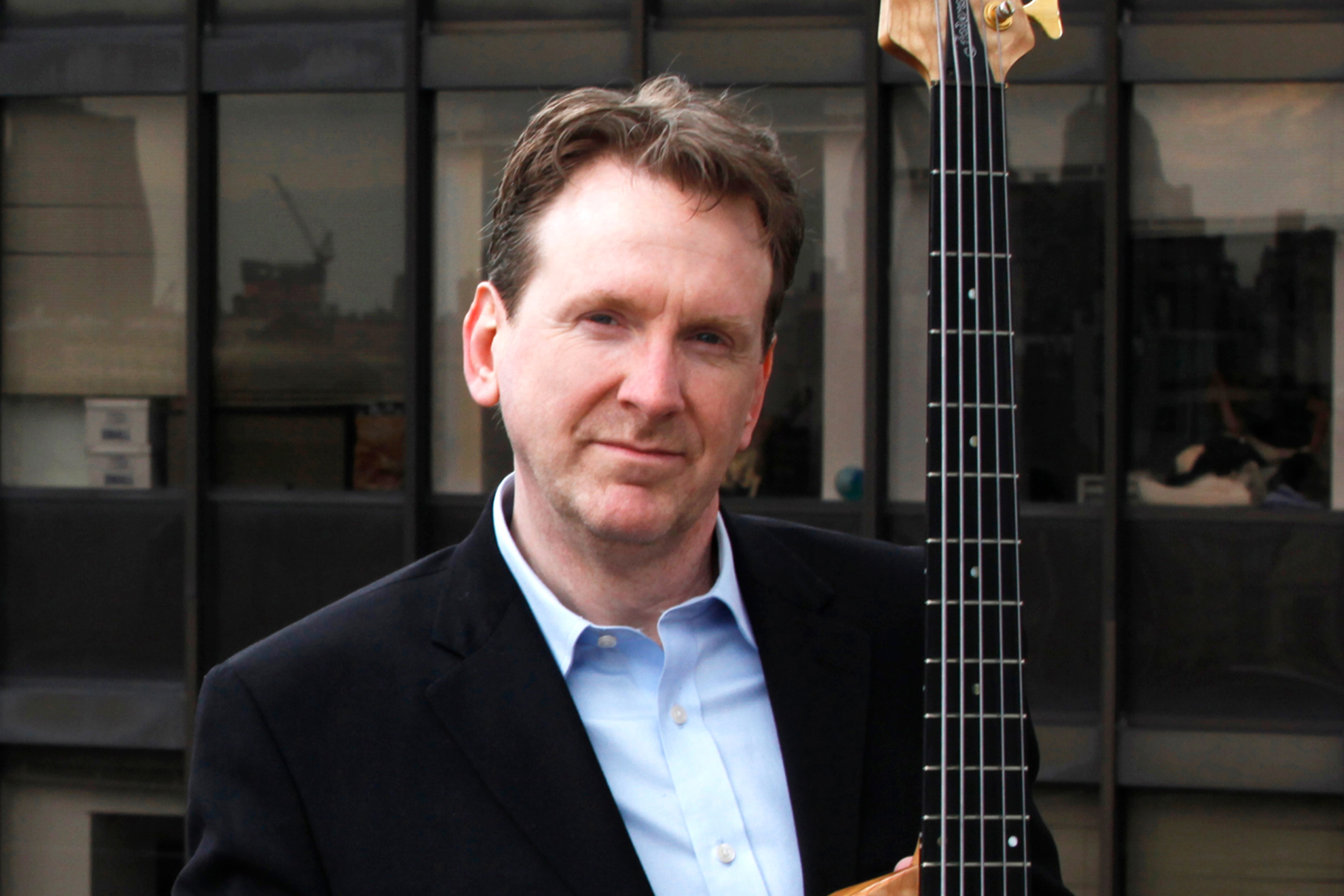
With decades of playing with some of the world’s top musicians under his belt, Tom Kennedy has seen a lot. Starting with jazz greats when he was just a teenager, the master bassist has seen the world from the stage and the studio. That’s only part of why his new album, Points of View, is so aptly titled.
The release, which is his fifth solo album, features a good handful of Kennedy’s fellow top-tier jazz musicians, including Randy Brecker, Mike Stern, Bob Franceshini, Chuck Loeb, Lee Ritenour, Dave Weckl, and more. He simultaneously supports and leads the mix of players on his upright and electric basses, navigating a mix of jazz, blues, latin, and funk.
We were lucky to catch up with Kennedy to get the scoop on his new album, his mysterious fretless bass, balancing the electric and upright basses, and why it’s so hard to solo on your own songs.
You started on upright when you were eight or nine, right?
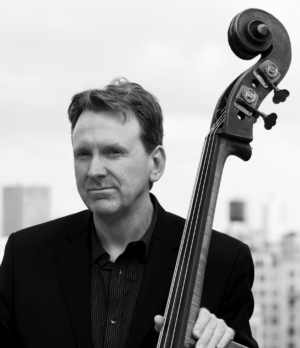 I actually started before that. My parents owned a music store, so they gave me a little Beatle bass to play. I played that at my brother’s sixth-grade graduation, so I would have been in fourth grade at the time. He taught me a couple of tunes because he had just started to learn piano at that point. I learned a couple songs on that bass. I didn’t really take to it so much, but when I got to hit a couple of notes on upright bass, that was it for me. I was probably eight at the time.
I actually started before that. My parents owned a music store, so they gave me a little Beatle bass to play. I played that at my brother’s sixth-grade graduation, so I would have been in fourth grade at the time. He taught me a couple of tunes because he had just started to learn piano at that point. I learned a couple songs on that bass. I didn’t really take to it so much, but when I got to hit a couple of notes on upright bass, that was it for me. I was probably eight at the time.
It’s funny, I had this other instrument, too, that my father gave me. It was an old Italian fretless bass that has no markings. I still have that one, and he gave it to me when I was eight or nine years old. They knew that I really liked the bass. As I said, it didn’t really speak to me until I messed around on the upright and then it made sense. I still have that axe, and I use it on a lot of recording sessions.
I’m really curious about what that is.
It’s called a JG-400. I’ve seen about three other ones. The closest thing I found out about it is that it was made in Italy somewhere and that they made about 200 of these things. It was a little shop – maybe in Milan; I really don’t know – it was back in the ’50s or early ’60s. At one point I actually had three of them because every time I saw one I had to buy it. One was this really ugly orange; then I had a silver one and a sunburst one, which was my first.
I remember trying to interchange the necks, and they didn’t fit. They were like one-of-a-kind instruments. I’m still trying to find out more about them. Each one is really light as if it’s made out of balsa wood. It’s amazing because after playing upright for a while, when I revisit this bass it has a kind of acoustic response. You feel the vibration through the body. It’s a solid instrument, but it breathes. It’s very strange.
You must have started gigging pretty quickly. Were you gigging as soon as you got an upright?
Well, it was within months. My father – Ray, Sr. – was a jazz trumpet player for years and then opened a retail music business in St. Louis. My brother, Ray, and I didn’t know him as a player, but he was always instilling great music. As soon as he discovered that we had this feeling for jazz music, it was all over. He started exposing us to Charlie Parker and Dizzy Gillespie and Sonny Stitt and all these players. I was nine years old at that time. Oscar Peterson was kind of a big deal for us, as well. Then I heard Ray Brown [with Peterson], and that was it for me. That was the beginning and end of bass playing as far as I was concerned at that time. I started just trying to be like him.
The cool thing is that every day after school my brother and I would drop our books at the door and run into the music room and play. We would play for hours learning new tunes. We’d listen to recordings and try to emulate what they were doing; not only the songs but also the way they were played. We always called it the Kennedy Conservatory. [laughs] It was great because we had such an amazing opportunity to really spend time with the music. I always try to tell students that. If you want to be great, you spend a lot of time doing it. It’s a passion, and you really have no choice.
So you must have had a lot of musicians coming through your house, too?
Well, it was cool because at that time around 1970 there were a lot of guys floating through. When my brother was 14 (I would have been 11 at the time), my father took him to see Dizzy at this place in North St. Louis. My dad was this very charismatic, fearless kind of guy who would just walk right up to anyone. He walked up to Dizzy and said, “Hey Diz, I want to introduce my son. He’s 14, and you’re his hero. He plays ‘Night in Tunisia’ all the time.” So Dizzy got up to play his concert and “Night In Tunisia” was the last song of the set. He called Ray up to play, so here’s this 14-year-old kid playing with Dizzy.
So that’s kind of what it was like. There were a lot of people who would come through, and we were kind of the first-call group for those guys because we were so into the music. Amazingly, there were a lot of really talented musicians in St. Louis at that time, but I think it was just availability. I think once we played a couple of those gigs and the word got out that we could handle it even though we were young [we just got called]. I remember playing with Sonny Stitt when I was 14 or 15 and Freddie Hubbard when I was 17. So we kind of got to be the first call guys. It was a great time to come up, too, because guys don’t seem to travel without bands these days. Most bands are pretty self-contained.
Maybe I’m wrong in this, but it seems like jazz started with self-contained groups, then evolved into pickup groups, and now it’s circled back around.
It kind of seems that way. I think there were enough guys that had enough bad experiences because it’s a crap shoot, you know? I’ve done it in different territories around the States. I’ve gotten called to do a clinic thing, and they want me to do a concert with it, so I’ll play with the local guys. Sometimes it’s scary. I’ve been in a couple of situations where it was like, “How is this going to work? How are we going to do this?” If you have a string of four or five of those in a row, I can imagine you’d want to stop playing. At least I would. [laughs]
Maybe it’s also more economically feasible to carry a band now, surprisingly. It seems like music always thrives at the worst times. There are a ton of people out gigging, and everyone else is broke. It’s really amazing how that works, and I don’t know how it works. I guess people need to listen to music and be inspired by art.
You ultimately started on that Beatle bass, but when did you start to come back to electric?
Well, I discovered the upright and started playing with my brother, and we were doing all this Oscar Peterson sound-alike stuff. Then we started playing with other people, so I just considered myself an upright player. I was kind of anti-electric at that point. I was a real purist of the bass, as they say. I loved it. I started exploring classical music and got a second upright, so I could set it up for classical playing. I was really hardcore.
Then I was in high school, which was about seven or eight years of playing upright. I remember the day I heard Larry Graham. I heard “The Jam” and man, that changed my life. I think it was just a random thing on the radio because we used to play the radio in our music store. I just said, “What is that!?” The feel was just killing.
The best part of the story is that they didn’t announce who it was on the radio. I even called the station, and they weren’t sure what they played when and where. It’s amazing how these things work out because the next day this guy walks into the store. He says, “Can I check out that bass over there?” This guy starts playing, and he’s slapping. I said, “That’s unbelievable. I just heard this guy playing like that on the radio the other day.” He said, “Oh yeah?” Then I said I didn’t know who it was, but I played a few notes from the tune. He said, “Oh, that’s Larry Graham, man! You have to check him out.” I immediately went out and bought all his records and lived Larry Graham for a month.
We didn’t carry higher quality instruments, so I went to a local guitar shop, and I saw a P-bass. I think at that time it was $275 for a brand new P-bass, so I bought it and spent every afternoon learning how to do that stuff. That was the real introduction to the electric bass for me. The cool thing, too, is I think it got me even more so into that bass as a separate entity, which I think in the beginning is really a good idea. I could never emulate, at that time, the feel and the sound of the upright on the electric.
I wanted to ask you about that, because I think you’re one of the few players that has such an incredible touch and feel on each instrument. How do you balance such a high level of playing on both?
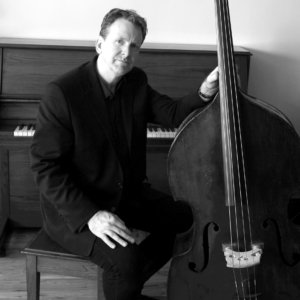 I think that was it. I think it came from mentally deciding they were two different things from the beginning. Which is not to say that they didn’t all come together later on, but I think at that point I started looking at the fine points of playing the electric bass. I started listening to a lot of guys. Jaco came way later, which was really funny. That wasn’t one of my main influences; I just wasn’t exposed to him ’til later on. Ralphe Armstrong was one of the guys, Louis Johnson of course, and Alphonso Johnson. There were a lot of guys coming through town, too, so Ray and I were warming up for guys like the Crusaders and Jan Hammer and all these crazy things. I really was able to get into the electric bass and understand how it worked. Then I met Paul Jackson, and he played a P-bass, and I had a P-bass. That was another [big influence] for me – I lived Paul Jackson for months. That music for me around that time was a huge deal.
I think that was it. I think it came from mentally deciding they were two different things from the beginning. Which is not to say that they didn’t all come together later on, but I think at that point I started looking at the fine points of playing the electric bass. I started listening to a lot of guys. Jaco came way later, which was really funny. That wasn’t one of my main influences; I just wasn’t exposed to him ’til later on. Ralphe Armstrong was one of the guys, Louis Johnson of course, and Alphonso Johnson. There were a lot of guys coming through town, too, so Ray and I were warming up for guys like the Crusaders and Jan Hammer and all these crazy things. I really was able to get into the electric bass and understand how it worked. Then I met Paul Jackson, and he played a P-bass, and I had a P-bass. That was another [big influence] for me – I lived Paul Jackson for months. That music for me around that time was a huge deal.
It’s about getting into all the aspects of whatever instrument you’re playing. I believe I was born to play upright. I think that’s my strongest instrument, but I’ve learned to adapt so many things back and forth. I can actually play pretty good funk on the upright as well as walk. Mike Stern always talks about that. He says, “Oh, you sound like an upright player when you play the electric.” I think that’s the trick: really separate them until you learn all the subtleties. Then you’re able to cook it all up together.
To this day I’ll still hear something that inspires me on one instrument or the other. That kind of puts everything in motion again. It takes away the boredom and the doldrum away so I can learn something else.
What’s the latest thing that’s excited you that way?
Well, going back full circle, I’m finding the fretless bass interesting again. I got away from it, although I developed this style with the fretted bass that emulates a fretless bass. It’s just kind of a softer sound. It’s all in the fingers. But there are certain things you can’t do on the fretted bass. You don’t get that “mwah” like you do on a fretless. It’s just the nature of the instrument.
So I’m starting to think about the next recording and putting a trio together and the kind of music I want to play. I actually only pulled it out because it was the closest instrument to me one day. I started playing and thought, “Hey, there are some ideas here.” All the sudden it was like the world is new again. I love that. After playing 40 years professionally that it can still feel new like that from time to time. I always said if it gets to be work, I’ll do something else.
That’s why I never got too involved in things I knew I didn’t want to do, like pit orchestras and wedding gigs. There’s nothing wrong with doing that and a lot of people love doing that. I think it’s great. It just was never my thing and would mainly just frustrate me. I wanted to be inspired when I play. I’m so fortunate in the sense that all of the guys… Well, Dave Weckl and I grew up as kids. But with Mike Stern and Dave Grusin and Lee Ritenour, these were all people I looked up to. Abe Laboriel was a big influence. Anthony Jackson was a big influence. I was listening to these guys and their music growing up. Being able to play with these guys and call them for my new album is great.
I remember I told Lee that I was going to use his son on a couple of tracks, and one of them was one of Lee’s tunes that he agreed to let me use. We finished the track, and I was thinking I’d really love to have the guitar melody like it’s supposed to be on the song. At the end of the session, Wesley said, “Hey, you know Dad wants to lay that track down whenever you’re ready. He told me yesterday that whenever you’re finished with the rhythm tracks, just send them out there so he can play on it.” [laughs] Pinch me!
You never assume because these guys are busy, but I just ask if they can play on something, and they’ll say, “Yeah, of course. You didn’t even have to ask.” And that’s magic, not to mention what happens to the recording when you have those guys. It goes to another level. It’s pretty amazing.
What is the story behind the title, Points of View?
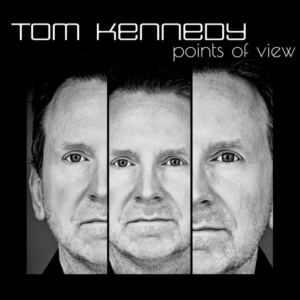 The title encompasses a lot of things. Originally, the idea of Points of View was to show some different types of things that I’ve done over the years: different styles and different instruments. I didn’t want to stick to one particular style, and I wanted to make sure I played electric and upright on this album. I actually wanted to play something straight-ahead on this album, as well.
The title encompasses a lot of things. Originally, the idea of Points of View was to show some different types of things that I’ve done over the years: different styles and different instruments. I didn’t want to stick to one particular style, and I wanted to make sure I played electric and upright on this album. I actually wanted to play something straight-ahead on this album, as well.
Then I started realizing that that there was writing [on the album] from three of my good friends from St. Louis that I grew up with. I played with an old friend from St. Louis’s CD. It arrived in the mail and I put it in and listened to the whole thing. There were a couple tunes in particular that I really fell in love with, and one that I heard and immediately thought, “I have to record this song.” It’s funny how it comes to you like that. There’s an absolute that happens. I had just been reviewing some old music that I hadn’t heard in a while because I wanted to get inspired for this project. I heard these two other songs by two other friends of mine. The ironic thing is that all three of them play with Jimmy Buffett. They’re professional guys that have been out there playing for years. They’re great jazz guys but they play pop music nowadays. So there were three songs right there that further expanded this idea of “points of view”. It’s kind of like a view of where I came from in St. Louis.
On top of that, it was these guys that I randomly asked to play on the record. When I was in the studio putting these tracks down, I was realizing just what they were adding and what we were creating in the music. There were so many points of view in the music itself. When I was listening to what everyone was doing individually, it was creating this amazing energy that I don’t think I could have ever been able to conjure in my head. I sort of had an idea of what the music would sound like but, of course, it became a totally different thing when the guys brought their influence and their ideas.
Do you write for those musicians or do you just write something you’d like to hear and they bring their own thing?
I write for the music; I just write the stuff first. I don’t really have anything in mind, and a lot of times I don’t even think about what kind of groove it’s going to be. If it’s a melody idea, for example, I’ll add some harmony below it and then ask myself, “How would this feel good? What kind of vibe could I create with this?” It could be a Bossa Nova or a funky thing.
Other times I’ll get a really good groove idea first and build off of that. Then the melody or harmony will come out of that, but it’s always the music first. Then usually when I’m done it’s pretty easy to say, “Randy Brecker would sound amazing on this song,” or “I can hear Bill Evans playing the soprano on this.” That’s kind of the easy part. The tricky part is getting those guys to play.
I was talking to my wife the other day about how easy it is – after the drudgery of writing the music and getting that all together – from that point on. It’s just a joy to be creative again in the sense of just playing. To me, when we go into the studio and play it feels like it’s live anyways. And the last point of that is that these guys will bring something more to it than I could have ever imagined. When Randy played on that tune, I envisioned what he would sound like on that song, but when he played on that song, it just knocked me over. It’s so gorgeous and better than I could have ever imagined. The same goes for Dave Weckl. When you use musical guys, you’re going to get an amazingly musical combination.
Earlier you said one idea leads to another, which made me think of your solos. It’s interesting to me when a composer takes a solo on his own song, and I wonder if you have an idea of what you’re going to play for it. Listening to the album I can hear that you’re taking off of what the last soloist did. Are all of the solos spontaneous or do you have ideas that you want to stick in there?
I’ve got to say, spontaneity is the thing. I think most composers that play on their own compositions would tell you it’s the hardest stuff to play over. You hear the song in your head and you write it, then you realize, “Man, this song is hard to play.” In many cases, they’re not the easiest changes to play over. I don’t really fashion the songs for my playing, per se. I really want to get into that more to compose songs around what I do and what I play solo-wise to see if that makes a difference.
To answer your question, I always take from what the soloist before me has done, and I always try to leave my solo in a place where the next soloist can pick it up and do something melodic. I want them to be inspired by something I ended up playing, or even just the shape of my solo. Man, I’ll tell you – when we get in the studio and play through these tunes for solos, I’m thinking, “I’m sucking!” I get so busy writing the songs and making some sort of arrangement that I forget to practice the songs. That’s very typical, I think.
The other thing about that too is that in a lot of cases you’ll record the music when it’s still new, then you’ll tour the music. That’s when you really get to know the insides and outsides of it and really learn the stuff. It’s kind of a little unfair, but you want to present the music so you can tour it. It would be nice if you could tour the stuff and then go into the studio to record it once you’re comfortable. But it doesn’t work that way.
I try to put things together and keep certain jazz harmonies, so it’s not just all over the place. If it gets too harmonically complicated, it’s really hard to be melodic for me. Then it doesn’t have that prettiness that I like. Not to say that there’s anything wrong with any style or the way anyone writes, but for me, I have a certain way that’s comfortable for me. I want to keep things somewhat in that ballpark.
That seems to be a bass player thing. Since we’re rooted so strongly in the groove of the song, we just want a nice melody.
Absolutely. That’s the first thing I look for in music. A lot of people, especially younger musicians, are looking at other aspects of music and trying to break the music barriers. That’s great! It’s inspiring to me, but it’s not always the most comfortable stuff to listen to. At some point, you start realizing that you’re a certain age and you’re a certain type of person, and you like a certain type of thing. There’s nothing wrong with that. I think we fight that when we’re kids because we want to reinvent the wheel. After a while, you realize you’re doing what you’re going to do. You can expand that, but it’s still going to be this thing.
A lot of actors talk about that, too. Once you hit that point, then you have a certain security that is beneficial to anything you do as far as writing or playing. You don’t expect something unrealistic. For years, I played with Bucky Pizzarelli and Mundell Lowe and all these guys that are older. They’re so amazing, and their playing is so identifiable, so there you go. That’s one great compliment that I get. People say, “You sound like you.” To me, that’s the greatest compliment you can get. I want my playing to be me. I want it to be my personality so people can know who I am as a player.
What is that sound that opens the first track, “I Remember You”? It’s such an interesting way to kick off the album.
I played that part, although it’s all processed and sequenced in Pro Tools, so it wasn’t really me playing. [laughs] That sound emulates, and [at the same time] really doesn’t emulate, a guitar part. This is a song that my friend Peter Mayer wrote. It starts with a little guitar pattern. The original actually has a little more of a bouncier feel. It’s almost like a 12/8 feel than a straight 16th feel, but it’s got that same basic rhythm. When I heard it, it just struck me that I could do a keyboard part that would be similar to that, and it might be kind of cool to make it a bit of a different thing because the feel of the song came out completely different. It’s like re-orchestrating, I guess. There was no guitar player on that track, so it made sense to me to just make it a little synth thing. It kind of becomes a drone through the entire song, which is kind of cool. It’s like keeping the original “guitar part” by using that little synth patch.
When the rest of the band comes in, it sounds like it goes away, but it’s still in there and gets deep into you.
I brought the synth way up at the beginning to be compatible with the volume of the drums. After the drums come in and especially when the melody comes in, the patch drops a few dB. Then it drones and floats through the track at that point. I might have brought it up a little during the drum solo, but it basically just sits in the mix throughout the song. So it’s cool that you said that, because that was the idea for it to keep it going and push the whole thing along. It’s also such a legato melody on that song. There are very few eighth notes. It was originally a vocal melody that I adapted to the sax. It took a minute to find the sound I wanted to use, but that one kind of disappears as a presence. It mixes well.
The title track is a modal tune based off of “Impressions” with some really cool hits. Do you just get inspired and find those rhythms or do you get a motif and work with it?
You know, on that I really didn’t. What I wanted to do with those hits was to answer what the melody was doing. In a sense, [I wanted] to shake it up a little bit and have some offbeat accents that would compliment where the melody was going. I don’t know man, that’s a really good question. I think some of my inspiration with that is some of the things that we used to play in Weckl’s band years ago with Jay Oliver and later with Steve Weingart. We were always looking for new rhythmic things to make the compositional stuff more interesting. Or Dave would be playing along, and he’d say, “Hey, it’d be cool if we did this hit together.” I think some of that comes from those days for me.
Also, I’m a huge big band fan. Stan Kenton is my all-time favorite. I listened to a lot of Maynard Ferguson and Buddy Rich and all of those bands. I got a sense of rhythm from that, too. So those kicks have a lot of influences, but when I listen to it, I think, “Okay, what’s exciting? What would be unpredictable here that would make your head twitch a little bit?” But it still has to be something that works and doesn’t throw you off the path. I figured I had freedom to do what I wanted with those hits because the melody was so based in eighth notes and pretty predictable rhythmically that I could throw in some things between. There was no particular pattern or motif that I was thinking about at the time.
I tried it a lot of different ways at the time, but a lot of times those things will come to you quickly. Sometimes I’ll hit on something like that, and then I’ll mess around with it for a while but ultimately go back to the original idea. A lot of that is what you hear in your head as the composer. That’s pretty natural, but if anything it stems from [my work with Weckl and big bands]. Dave is a huge big band fan from way back. He’s a Buddy disciple form the beginning. He and I just played a big band thing in L.A. with Dave Grusin. We did his West Side Story that he did on GRP years ago. There were a bunch of all-star people in the band. We were like kids. It was like going back to being 15 again. It’s so fun to have that power in that band with the hits and the high notes of the trumpets. You could just play in four and swing as hard as you can. That drives the band.
The final track, “Gaslight Square Blues”, is a straight-up shuffle blues, which I think is great. It’s just a great feeling shuffle that you just lay into the groove. Did you just want to throw a little shuffle to play in the end for fun?
You hit the nail on the head. With all the other music that I had on there, which I thought had some playful times and some fun stuff, there was some serious music in there, too. It actually follows that tune with Randy, which is more of a compositional song with a vibe, you know? It is what it is. I’m looking at the record and I’m thinking, “I love the order of this record, but I just want to have fun at the end.” I thought a shuffle would be awesome, because Mike is so great at playing the shuffles. Richie Morales will just shuffle all day and he won’t deviate from that. He’ll just play it. As soon as I thought that, I figured I’ve got Mike and Richie, now I need a saxophone. Bob Malack is great, I’ll call him. Then I thought, “What’s the song gonna be?” I figured it had to be a blues, because blues is fun. Then I just wrote the melody from that. I wanted something we could go into the studio and play two takes and have it. That was exactly what it was.
For me, it echoes my last record, Just Play, which is all acoustic. We basically went in and did two takes on each song for that. Because each of us had played all those songs so many times, we could all be comfortable and just go into the studio and do it. I wanted it to also be a little edgy and raunchy as far as the sound. I had the guy add a little distortion to the whole mix just to have fun. Kind of a like a little, “Okay, well bye!” [laughs]
It’s fun and you go away from it feeling good, too. It’s interesting because Mike was just coming back from his accident at that point. He had only been playing for about a month at that point. He had broken both of his arm. He was gluing the pick to his fingers so he could play the guitar and he had a cast on his entire arm. You don’t keep guys like that down. So that’s why the song it a little tribute to him, too. I wanted him to come in and have fun. I wanted everyone to smile. With the rest of the music, it wasn’t happy but it was a bit more serious. That was just a really good way to cap it off.

